Amazing World
Amazing World
Life on Earth
“Kreegah!” Tarzan warned Bolgani

“Bundolo!” The gorilla growled back his death threat.
They fought a duel and then “Aaaouaa!” the victory cry the great apes rang out, stilling the jungle into silence. Tarzan stood triumphant over the gorilla…
“This is too bad, Tarzan, “said Bolgani. “However much I try to evolve, I don’t become like you.”
The Lord of the Jungle laughed. Evolution takes lakhs and lakhs of years, Bolgani. You are making a common mistake. Pictures showing a ‘ladder’ of ‘progresses tend to make you think evolution works in this way. Humans evolved as branch of the apes but so did gorillas. Humans did not evolve from gorillas. Both humans and gorillas evolved from common ancestor.”
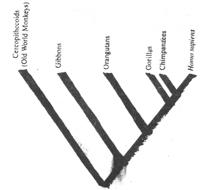
“Doesn’t evolution change species into new species?” asked Bolgani. “No, ancestors are not creatures who get bodily transformed, each and every one, into descendants. A species of animals does not change wholesale into one new, more evolved version.”
“So how does evolution work then?” asked Bolgani?
“Like a tree,” answered Tarzan. “All the species living today are the leaves growing at the ends of the tree. As time goes, branches shoot out from these ends. The earlier branches of our trees are no longer livings.”
“But humans have evolved from apes, right?” asked Bolgani.
“Well, a more correct thing to say would be that human’s are apes,” said Tarzan. “From an original ancestor, apes have evolved in different directions. Gibbons and orangutans, gorillas and chimpanzees, and us humans, we are all different variations of the bush of apes, which sits inside the tree of evolution.”
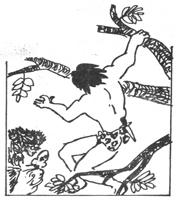
“And we are both here,” continued Tarzan, “because much, much earlier, our primate ancestors divided into monkeys and apes. Monkeys have evolved, too, into baboons and rhesus monkey and langurs and so on.’’
“Their evolution stopped,” Bolgani looked at the little monkey sympathetically, “but the apes continued evolving.”
“No, no,” Tarzan was angry. “Monkeys are not stagnant. They are in fact the greatest success story among primates.”
“Success?” Bolgani was surprised.
“There are far more species of monkeys than of all apes put together,” answered Tarzan. “By the proper criterion of diversity, by the number of leaves they occupy in the tree, monkeys are more successful than apes. Actually,” he mused, glancing at the happily chirruping monkey, “apes have always been losing ground to the monkeys.”“Since the beginning?” asked Bolgani
“No,” admitted Tarzan. “The ape-monkey split was more than 2 crore years ago. At first there were far more species of apes than monkeys. They were much more diverse, just in the continent of Africa, than the apes are today all over the world. But half crore years ago, monkeys began an acceleration that continues. Today, monkeys are far more successful than apes: they have a lot more species.”Bilgani was puzzled. “But why? We have bigger brains than Monkey.”
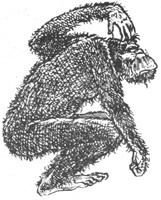
Tarzan laughed. Insects have much smaller brains than us, but there are more species of insects than all the rest of the animals and plants put together. The reason for success is not just brain size.”
“Yes, yes,” said Bolgani eagerly. “The fittest survive”
“Well, it is hard to say what fittest means.” Tarzan shrugged his shoulders.
“So why did monkeys get ahead of us?”
“We do not know,” answered Tarzan.
“May be monkeys were more flexible about their diet. A gorilla, like its ape ancestors, is a gentle creature that won’t eat any thing but fruits and shoots, unlike what Edger Rice Burroughs depicted in his stories. With climate changing and population of trees and fruits instable, many species of apes died out.”
“The ones who came down to the ground survived, right?” nodded Bolgani.
“Wrong!” Tarzan exclaimed. Gibbon’s and orangutans happily live in trees, don’t they? A few apes adapted to ground living. Your ancestors and those of the chimpanzees learnt walking on knuckles. Our ancestors learnt an upright gait. Maybe that made these species better suited in the competition for food.”
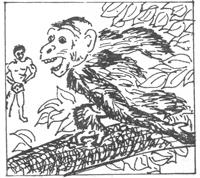
“Yes, that is why we fought at the beginning of this story,” said Bolgani. He continued sadly, “And I lost like I always do. So you are more suited and will survive.”
“This poor monkey is not our food that we are fighting for!” said Tarzan. “Anyway outside of comics, gorillas are much stronger than humans. A bare- handed fight would lead to the gorilla winning. Humans can only win by being devious and using tools.”
“But it is not winning fights that matters in evolution,” he continued. “A large meteorite impact in Mexico led to the extinction of the dinosaurs (Jantar Mantar, Mar-Apr ’96). If reptiles had only evolved into their strongest form- the dinosaurs-we wouldn’t be sitting here talking about them. The bush of reptiles grew a dinosaur branch, a bird branch, a mammal branch, The Mexican meteorite drove the dinosaur into extinction, but the bird and the mammal branches survived.”
“So survival of the fittest is not all of evolution, contrary to what most people think,” noted Bolgani. “First there is diversity. It is only if there are many different species in the first place that the fittest among them come out better. If there is only one species existing, then an event which is unsuitable for that species can wipe it out.”
"Right,” Tarzan nodded. "First there has to be a great flowering. Only later,a pruning. From our perspective, we tend to see the pruning more easily, but the flowering is equally important. So to evolve, my species should branch out into ape-men, and then evolve into new men who can successfully compete with you humans.”
“There you go again, evolving linearly!” exclaimed Tarzan. “Remember that we humans have evolved from ape-men. Africa was full of ape-men species like Australopithecus what did we do them? We drove them extinct.
Bolgani looked shocked.
“Humans are one leaf of the tree which has eliminated the whole bush that it evolved from. The Neanderthal man, the Cro-Magnon man, homo erectus of 1 million years ago, all are gone and only homo sapiens remains. If ape –men try competing with us, we will probably finish them off.”
“You will always dominate us,” lamented a woeful Bolgani. “In our environment, maybe, “responded Tarzan, “but in the equatorial forests of Africa, gorillas still happily.”
“But those forests you will cut away one day and bundolo! bundolo” Bolgani gestured as through he were holding a gun, “you will kill us all.”
“Look at the cheerful side,” said Tarzan “Suppose a new deadly malaria spreads and wipes us out? Gorillas may survive. If, say, homo erectus were still around and was immune to that disease, the genus of humans would have been protected. But now such a disease would end all our lakhs of years of development, and intelligence would have to develop in a different life form.”
Well, your medicines and pesticides are trying their best to eliminate species which may be dangerous to you,” said Bolgani.
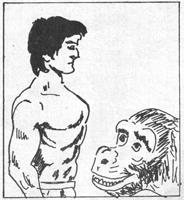
“There are other ways of doing that Insects are multiplying because a lot of their natural predators are gone, and we are responsible for eliminating some of them. We dislike bats, for instance which do a great job of getting rid of insects, and prevent insect-borne disease from spreading easily. Fortunately, bats are among the most diverse mammals, and they survive successfully.”
“Bats are fine, but what about Bolgani?” the woebegone gorilla asked.
“It is we humans who have to learn that living in harmony with a diverse variety of species is the best way to survive,” said Tarzan gravely.
Science in History
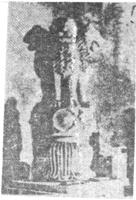
We have read that there lived a great king called Ashoka, and that he did a lot for the welfare of the people. How do we really know that such a person lived at all, let alone what he did? When we hear that the emperor Aurangazeb was a tyrant, how do we believe such judgement?
Usually we do not pause to ask such questions. We believe what we read in books. Often we believe what we hear. Think of the controversies which have arisen because of this- the Babri Masjid tragedy is a case in question.
In Tamil Nadu, we often hear that Tamil is the oldest language, that the Aryans conquered the Dravidians, and so on. Quotations from popular historical novels are often used to justify such judgements. This is only to be expected, as history (Babri Masjid, Aryan invasion…) has become the subject matter of road-side and tea-shop conversation. Then it becomes all the more important to question the basis of how we understand history.
How can we find out who is right in these matters? How did the authors of the history books find out what happened? What evidence did they have? Did they just guess?
Rather shockingly, it must be admitted that much of Indian history as we know it lacks hard evidence.
The situation is quite unlike that of, say, Chinese history. The Chinese have tables and records dating as far back as 1400 BC. The cultures of Rome, Greece, Egypt and Babylon all left meticulous records behind.
A comparable one in our history is perhaps the Rajatarangini composed around 1150 AD by Kalhana, of Kashmir, in Sanskrit, He has discussed the kings of that region at that time. Clear detailed records are available only from the Trunk and Mughal period onwards.
What about Emperor Ashoka?
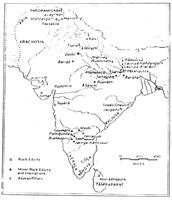
Even a hundred and fifty years ago, popular belief held Ashoka to be a puranic figure. In 1837, an English archaeologist named James Prinsep discovered a crucial inscription written in ancient Indian Brahmi script.
It talked about a king called Devanampriyapiyadasi, the favoured of the gods. The name remained a puzzle, particularly because evidence kept showing up from places as far as Sri Lanka about a king called Piyadasi. But it was unclear who the king was, which period belonged to etc.
It was 1915 when an inscription bearing the name Ashoka Piyadasi was found and all accumulated evidence could be pieced together to infer that Piyadasi, Ashoka and the son of Bimbisara Mayura all referred to the same person. As more information trickled in from stone and rock carvings and pillar etchings, Ashoka’s history could be reconstructed. Even at this stage, some amount of guesswork was needed.
Even as this went on, India was experiencing its freedom struggle. Ashoka was seen as a symbol of pride in ancient Indian history, and his name was used extensively in patriotic speech. Soon Ashoka’s name reached every corner of the country. The legend of his overnight conversion to Buddhism at the end of the Kalinga war took in the popular imagination.
It is a different matter that, according to what the inscriptions tell us, Ashoka took more than two years to be convinced into becoming a Buddhist! What did you read about this in your books?
Evidence
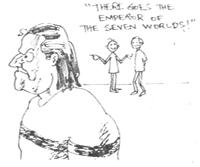
In some sense, all the folk tales and legends one hears contain material for history. But these cannot be called evidence as such. Perhaps the most important method for historical research is archaeological discovery. When trained archaeologists big up old coins, pieces of kitchenware, ornaments, or discover skeletons and mummies, ancient paintings and sculpture, even dresses sometimes, all of it offers evidence. Whole buried cities have discovered thus. Relics of an ancient past, they talk to us about their times.
Thus were Harappa and Mohenjodaro discovered in 1922, and we learnt of a civilization which flourished nearly 4000 years ago.
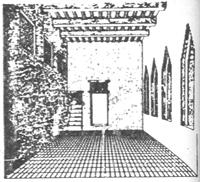
In 1910, the archaeologist Sir Mortimer Wheeler and his team discovered that a city called Arikkamedu had prospered in ancient times in the area we know as Puducherry. These people had trade relations with the Romans. The advent of carbon dating techniques have further enhanced our abilities to date historical events. From the ratio of an isotope of carbon (C14) to normal carbon (C12) in a specimen, archaeologist can now tell how old the specimen is. Coins, official seals and inscriptions on stone, records of ownership transfer and decrees continue to be major historical news. Accounts keeping and revenue management are old activities, necessary for all large enterprises and these bring valuable historical information too. We need to be careful about believing what is found on these inscriptions too. These were also mostly released by the governments of the era and it is common to find local chieftains, who ruled a few villages, described as “emperor of the seven worlds and the seven seas.” Temples, tombs, public meeting places and other halls where people of those days used to congregate contain valuable historical evidence, particularly in the shape of paintings, sculptures and music. But the tools, objects and instruments used in their making carry the best information.
History, or his story?
It must also be understood that history is not record of royal rule and wars. A good understanding of history is possible only when we begin to answer questions like:
How did those people produce things?
How did they transport goods?
What implements did they use?
What methods were used in agriculture?
Did they irrigate fields?
What were their food and dress habits?
What gods did they worship? Such questions dictate research in history. Suppose you hear a story which goes, 5000 years ago there lived a king who ruled a big empire. He had a big palace, large armies and the fought major battles.
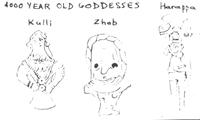
So history is not so easy after all. On the other hand, it is a fascinating subject of enquiry, demanding caution, patience and perseverance.
Deserts
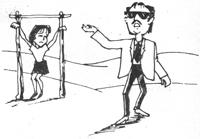
It all started with a film song- Raju was captivated by the dream sequence accompanying the song in a film where the hero trudged pathetically through sand dunes calling out for the heroine. Raju kept trying to simulate the hero’s walk, cutting quite a silly figure in the process.
Grandfather was watching Raju with great amusement. He asked Priya, who was passing by, weather she knew which desert Raju was crossing. Priya pretended to study Raju carefully and pronounced, “The Kalahari in Southern Africa.” Grand father through it was more like the Gobi desert if central Asia. Raju himself joined issue with Great Spirit; he would have it that he was crossing Australia’s Victoria desert.
Before long, Priya had brought out a world atlas and they were busily perusing it, looking for deserts. Raju had a doubt: did all deserts have huge sand dunes in them? Grand father replied, as was his wont, with a question: “Don’t you know of deserts which have no sand at all?”
This caught the children’s imagination- a desert without sand!? They asked Grandfather to point out such a place on the atlas, and when he did, they were astounded. “What kind of a joke is this, Thatha? Deserts don’t even have water usually, and here you are calling the Arctic a desert! The Arctic region probably has more ice than anywhere else in the world!”
Grandfather chuckled. “It is not unusual to call those lands deserts which have very little drinking water. In that respect the Arctic is a desert. Maybe we can call an icy desert. Of course, it is more usual to speak of sandy deserts.”
Priya observed that deserts typically seemed to be far away from coasts. The others agreed. They conjectured that this might be a factor leading to desert formation: by the time the water-bearing clouds got there, they probably lost all their moisture. Further study of the deserts’ location showed that moist winds would only miss them.
This led Priya to ask, “Do you mean to say that it never rains at all on deserts?” Raju said, “Obviously, that’s why they are deserts!” Grandfather agreed rather half-heartedly with Raju: “Yes, rainfall is low in desert regions. But when it does rain, it usually causes floods-there is hardly any vegetation to prevent flooding. But then in desert regions, rain is not predictable times like the monsoon-if it were, the sand could be cultivated!” Raju was lost in thought. Priya wondered, “If it rains, the place must indeed get really hot!” Grandfather pointed to typical day-time temperature figures for deserts: nearby 50oC.
He explained that one without clouds in deserts skies, and without clouds, a desert would receive the sun’s heat directly. Sometimes, the dry heat could even cause water droplets from moist clouds to evaporate before they hit the ground. Raju inferred immediately that cloudless skies meant cold nights too. They checked the figures and saw that even a day-time temperature of 500 C could be followed by a chilly night at 80 C. This led Priya to wonder how plants and animals survived in such climate conditions.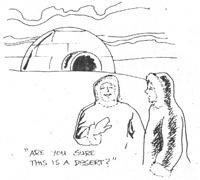
Raju thought the sand would be unsuitable for plants. When Grandfather started saying that some plants do grow there, Raju objected that desert sand looked like such fine flour that vegetation couldn’t possibly grow in it. Grandfather denied this firmly. He pointed put that it was a misconception to equate deserts and sand dunes. “Most of the desert region is rock and stone, not sand. In fact, in the Sahara, sand dunes cover less than 10% of the area.” This led to the natural query: how do sand dunes get formed at all? Pander and pencil were brought, and a lively discussion ensured. Raju suddenly realized that they had drifted away from the topic of animals and plants in the desert. Grandfather was perhaps getting tired. He asked Raju to find out from his teacher. Raju did precisely that next day.
The making of a Sand dune
It is interesting to see the varied shapes of rocks in deserts. Without trees to obscure the view, one can clearly see the ups and downs of unfolding vistas filled with strangely shaped rocks and stones. It is not uncommon to see a jagged shape like the one shown on the right. This is largely due to the fact that rain falls directly on the rock, without any deflection by vegetation, and standing rain cuts into the top surface, leaving the rock vertical but serrated on top.
Even more striking are shapes like this next one. These are because of radical temperature changes: expansion during the day, contraction at night, leading to breaking. This releases sand which spreads out. Later the sand gets lifted by wind hits the rock.
But sand is heavy and can fly only to a height of half a meter, and therefore manages to corrode only the base of the rock, leaving the top intact. Eventually the rock collapses and after a few thousands years, it is all sand. Indeed, scientists even use sand spread to calculate the extent of rocks in the region.
Typically sand dunes are convex on one side and crescent shaped on the other, as you see. This is because when the wind blows in one direction, it pushes the edges more easily than at the center. It also pushes the sand on the top over the edge. As this continues, it looks as if the whole dune is moving. The Sahara presents a breath-taking sight of many such transiting dunes, some a kilometer broad and about 200 meters high.
The Thar Desert
The Thar desert we know of in Rajasthan is only a part of bigger desert, the remaining being in Pakistan. The Thar has many sand dunes.
(Priya explained with the pictures on the previous page how dunes get formed, and how they migrate.)
…One danger of dune migration is that the desert tends to spread. It is to prevent desertification that the Bhakra dam and power project was set up in the 1950s, to the north of the Thar, across the Sutlej River. The Sirhind reservoir in Punjab was built as part of a desert rehabilitation plan. In fact the northwestern Thar is a demonstration that desertification is reversible. But towards the southern side, the desert is expanding fast.
To the east of the Thar, the salt farms of the Sambhar lake are famous. (Interruption: Somebody asks, “Salt? in the desert?” Laughter.)
When you have hills on the edge of deserts, during the rains, water drains on the hill-side collecting sand, pieces of rocks, etc into a lake. Such water cannot work its way to the sea like in rivers, and simply stays there. As the lake dries every year, minerals collect in the water, which turns salty. Eventually there is enough for commercial salt mining.
Priya went on to describe rural industries which have emerged around the Thar. Later she showed pictures of Jaisalmer, the beautiful city of golden stone.
Desert Life
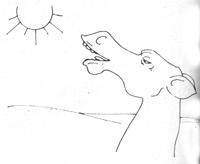
Contrary to what most people think, deserts do have many plants. Oases can even look with bright colored flowers.
The main problem is water. Plants are not mobile, so they cannot seek water07.jpg a far. Due to this, desert plants have broad and deep roots. This implies that the plants are widely separated. They minimize water loss by evaporation by having very small leaves (Desert hollies have their leaves at a 70 angle to the root.) This is typically seen in cacti. Cactus leaves, called thorns, are ultra-small and present a minimal surface area to the sun. Inside, these plants are like water pots.
But how can they survive in such conditions? Well, the oldest living plant in the world is desert creosote: one such bush has been alive in southwest America for the last 12,000 years! The Saguaro cactus can store nearly one tonne of water at a time.
Sometimes deserts get heavy rains and then undergo a magical transformation- an outbreak of beautiful flowers. But the glory does not last reassert itself, the flowers and plants burn out, and the desert returns to dryness and cacti.
The desert fauna fare better, basically because they are mobile. There are few big animals but deserts support an abundance of little insects, lizards and snakes. Birds are found largely on the fringes of the desert.
It is amazing to see mechanisms that have evolved to suit desert Life. Some large desert ostriches can survive entirely on salt water; they have special glands which help to separate salt. The sand grouse, found in African deserts, simply flops down on water when it finds any. Its little ones suck on its wet feathers to quench their thirst. Flying even short distances with wet feathers even short distances with wet feathers is quite a challenge!
To avoid heat, many of the desert creatures live under earth rocks and inside sand, where there is greater moisture and they are shielded from the sun. (We commonly experience this in beaches- even when the beach sand seems too hot to walk on, when our feet sink in; we feel the cool sand underneath.) Some of them depend on the blood of other creatures for liquids. Many desert foxes simply use the water in the bodies of animals they prey on.
The heat also means innovation in transport: most creatures have evolved a hop-skip-jump style of movement, mainly to beat the heat. Many lizards have hairy webbed feet enabling easy transport in sand.
The camel
When we start speaking of desert life, camels are what come to our minds first. Contrary to what many believe, camels (or dromideri) are not natural to deserts, but were only introduced to deserts by man for transport purpose. This is because camels find it easy to walk on sand: only two of their toes are conjoined. When a camel walks, all its toes are splayed, and the gauzy web-like structure between them is pulled along, so the camel’s feet never sink in sand.
Camels have special outfits: they can their nostrils, am important ability during sandstorms. The camel’s skin is tough and wooly at its back and thin on its sides, there by shielding the back from the sun as well as radiating away on the sides. An even greater advantage is the camel’s ability to starve for long periods. The food and water ingested is converted to fats which are stored in the hump and used later when required.
We find camel’s typically squinting at the sun. This is actually a good strategy, to minimize the surface area on its body exposed to sunlight.
Textiles, markets and the British empire
Written by Swarna Jayanti
In Mughal times, Indian textiles were famous through out the world. People from Africa or Europe or Indonesia, all came to buy Indian clothes. All this changed after the Industrial revolution in Britain. What happened in the Industrial revolution?
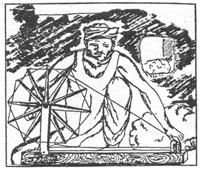
After 1750, factories began to come up in England and cloth began to be made by machine. Because of the machines, cloth could be produced in large quantities and cheaply. Factory – made clothes began to sell in the market.
British governments passed a law; Indian clothes sold in England would be taxed. This was to protect the produce of the new English factories. Because of the tax, Indian clothes became more expensive than the ones from the factories, and the English clothes got their market.
The Indian spinning industry was also. Machine-made cloth was much thinner than the spun by Indians. Even Indian weavers would buy finespun yarn from England.
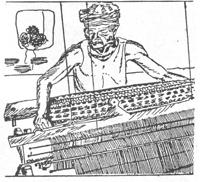
As time went, England had factories for making other things too. Matches, cement, paper, nuts and bolts, vessel, pens, pencils, watches, pins, comb, soap, oil- all these began to come from England for sale in India. The British governments in India would bye everything for its use, from paper and ink to building and trains, from England.
That is why one if the central themes of our independence movement, led by Mahatma Gandhi, was the boycott of British goods.
The view from South Africa
Dr. Kamal Lodaya, Chennai
The situation during the demand for Swaraj was brilliantly analyzed in Hind Swaraj, a book written by an Indian lawyer travelling on a ship from England to South Africa. This was serialized in Indian Opinion, a weekly journal edited by the lawyer. The whole book is written as a dialogue between the reader of the magazine and its editor. Here we provide some portions of it.
The Partition of Bengal
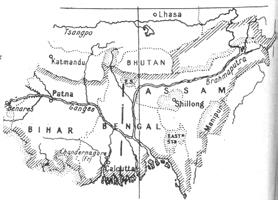
[In 1905, Lord Curzon, the Viceroy of India, divided the province of Bengal into two: West Bengal, Bihar and Orissa (which had a Hindu majority), and Bangladesh and Assam (with a Muslim majority). There was bloodshed and riots as people opposed this move.
READER: It seems proper to say that the foundation of Swaraj was laid by the Congress. But when and how did the real awakening take place?
EDITOR: What you call the real awakening took place after the Partition of Bengal. For this we have to thank Lord Curzon.
The people of Bengal reasoned with Lord Curzon, but in this arrogance he disregarded all their prayers- he took it for granted that Indians could only prattle, never do anything effective. He used insulting language and, amidst all the opposition, partitioned Bengal. That day may be considered as the day of the break-up of the British Empire.
This does not mean that the other injustices done to India are less glaring. The tax on salt is not a small injustice. But the people were ready to resist the partition. They knew their power; hence the conflagration. Partition will go, Bengal will be re-united, but the rift in the English barque will remain; it must daily widen. India awakened is not likely to fall asleep. Demand for re-unification of Bengal is practically like demanding Swaraj. Leaders in Bengal realize this, British officials realize this. That is why Partition still remains.
R: What are the results of Partition?
E: Until now we have thought that for redressal of our grievances we must approach the throne. If we get no redress, we may still petition. After the partition, people saw that petitions must be backed by force, and they must be capable of suffering. This new spirit is the chief result of the partition. That spirit was seen in the outspoken writings in the press. [The prominent anti-partition papers were Bande Mataram and Karmayogin (both edited by Aurobindo Ghose) , Jugantar (edited by Barindra Kumar Ghose and Bhupendra Nath Dutta (brother of Swami Vivekananda)), Sandhya (edited by Brahmo Bandhap Upadhyaya), Kesri and Mahratta (both edited by B.G. Tilak), and Kal (edited by S.M. Paranjpe).]
E: That which the people said tremblingly and in secret began to be said and to be written publicly. The Swadeshi movement was inaugurated. [This arose in reaction to the partition of Bengal. It involved the boycott of British goods. Many people resigned from government posts.]
E: People, young and old, used to run away at the sight of an English face. Now it no longer awed them. They did not even fear imprisonment. Some of the best sons of India are at present in banishment. [The most prominent was B.G. Tilak, imprisoned in Mandalay, Burma, from 1908 to 1914.] E: This is something different from mere petitioning. The spirit generated in Bengal has spread to the Punjab and to Cape Comorin.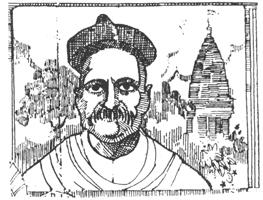
R: Do you suggest any other striking result?
E: The partition has not only made a rift in the English ship, but has made it in ours also. Our leaders are divided into two parties: the moderates and the extremists. [The “moderates” in the congress party stood for the constitutional method of getting self-government. They included Dadabhai Naoroji, Dinshaw Wacha, Pherozeshah Mehta, G.K. Gokhale, S.N. Banerji and M.M. Malaviya. The “hotheads” or extremists believed in both constitutional and extra constitutional methods to get swaraj. They included B.G. Tilak, Aurobindo Ghose, Lala Lajpat Rai and Bipin Chandra Pal.] These may be considered the slow party and the impatient party. Some say the moderates are timid and the extremists bold. All interpret the two words according to their preconceptions. This much is certain – that there is now an enmity between the two. One distrusts the other. This division is not a good thing for the country, but I think that such divisions will not last long.
What is Swaraj?
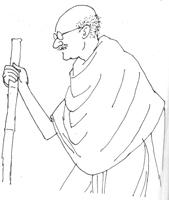
R: I have now learnt what the Congress has done to make India one nation, how the partition has caused an awakening, and how discontent and unrest have spread through the land. I would now like to know your views on Swaraj.
E: I must ask you a question. Do you think that it is necessary to drive away the English, if we get all we want?
R: I should ask of them only one thing: “Please leave our country.”
E: Well, then, let us suppose that the English have retired. What next?
R: That question can not be answered at this stage. The stage after withdrawal will depend largely upon the manner of withdrawal. If they retire, it seems to me we shall still keep their constitution. We should have an army, etc., ready at hand. So we should have no difficulty in carrying on the government.
E: You may think so; I do not. But I will not discuss that just now. Why do we want to drive away the English?
R: Because India has become impoverished by their Government. They take away our money from year to year. The most important posts are reserved for themselves. We are kept in a state of slavery. They behave insolently towards us, and disregard our feelings.
E: If they do not take our money away, become gentle, and give us responsible posts, would you still consider their presence to be harmful?
R: That is a useless question. It is like asking weather there is any harm in associating with a tiger, if he changes his nature. Such a question is sheer waste of time. When a tiger changes his nature, Englishmen will change theirs.
E: Supposing we get self-government similar to what the Canadians have, will it be good enough?
R: That question is useless. We may get it when have arms and ammunition. When we have the same powers, we shall hoist our own flag. We must own our navy, our army, and we must have our splendour, and then will India’s voice ring through the world.
E: In effect it means this: that we want English rule without the Englishman. You want the tiger’s nature, but not the tiger. That is not the Swaraj I want.
How does a historian see the Vedas?

What are the Vedas? The cores of the Vedic texts are four Samhitas (collections of hymns): the Rigveda, Samaveda, Yajurveda and Atharvaveda. Then there are the Brahmanas, which give interpretations of the rituals specified in the Samhitas. The Samhitas and the Brahmanas are together known as Shruti (“heard”). Then there are the Aranyakas, which are additions to the Brahmanas, connected more to mysticism and symbolism. More in this line are the philosophical texts, the Upanishads. The Aranyakas and Upanishads are called Vedanta (end of the Vedas). Then there are six Vedangas (parts of the Vedas): the Kalpasutra (rituals), Shiksha (phonetics), Vyakarana (grammar), Chandas (metrics) and Jyotisha (astronomy).
Which one is the oldest?
The Rigveda Samhita, a collection of 1028 hymns, divided into 10 manadalas (books). A hymn may have just one verse, or as many as 58 verses. The average hymn has 10 verses. This Samhita was practically as we find it today before the other Samhitas came into existence. But not all the hymns of the Rigvedic period are found in the Rigveda Samhita. It has only those portions which a particular school decided to preserve.
Who wrote the Vedas?
A large number of authors over a long period of time. The bulk of the Vedic texts were completed before Buddha’s time (400 BC). But there is no information about who did the editing and selection.
Who wrote the Rigveda?
Again a large number of authors. Mandalas 2 to 7 are composed by named priestly families, from father to son or teacher to pupil. In mandalas 1 and 10 we find danastuti hymns which praise the princes who employed the priestly singers. These provide data about the families of the poets and of the princes, as well as names and places of the Vedic tribes.
Didn’t Vyasa write the Vedas?
That is what the Mahabharata and Puranas say. This cannot be wholly true, at best it can be true that he put together the Rigveda Samhita, because we know that the other Samhitas are centuries younger.
Where were the Vedas written?
Many areas are mentioned in the Vedas, especially the river Sindhu (Indus) and its tributaries are described. But it is hard to tell whether these descriptions are from the older or younger writings. There is some astronomical information in the Vedas. The Vedic people knew the dates of the spring Equinox (March 21 in our calendar), summer Solstice (22 June), Autumn Equinox (23 September) and Winter Solstice (December). In the Vedanga Jyotisha, we find a statement saying that the longest day of the year (summer solstice) is 18 muhurtas. Since a day has 30 muhurtas, we can calculate the latitude at which this statement is true. The latitude turns out to be 35 degrees north passing through Srinagar, Kabul, Teheran and Damascus.
When were the Vedas written?
The Vedic people knew that on the dates of the Equinoxes, the sun rises exactly in the East. Right from those days, there is a tradition of imagining the stars which lie behind the sun – we say the sun is in this or that nakshatra. Now we know that the Earth precesses (wobbles) in its rotation, so the position which is behind the sun is slightly different each year.
The Shatapatha Brahmana tells us that the Krittika (karthikai) nakshatra rises exactly in the East. This is taken to mean that the Sun was in the Krittika nakshatra on the Equinox. This is not the case today! So we can calculate from the Earth’s known precession how long ago would the Sun have been in Krittika on the Equinox.
The date turns out to be 2300 BC. The Baudhayana Shrautasutra and the vedanga Jyotisha both tell us that the sun reaches the Dhanishtha nakshatra on winter Solstice. From this we calculate a date of 1400 BC. (If an ancient India astronomer had put these two statements side by side, the Earth’s precession would have been discovered by the Greek astronomer Hipparcos in 300 BC.)
Is Sanskrit the Vedic language?
The Rigvedic language is much older than the Sanskrit of the grammarians. The word Sanskrit (which means “put together”) first appears in the Ramayana. But the Vedic language is often also called Sanskrit. {Are there other books like the Veda?} Yes. The scriptures of the Zoroastrian (Parsee) religion, the Avesta, describe institutions, customs and ways of thought like those of the Rigvedic people. The language is so close that one can almost directly translate from one to the other. The Rigveda has a god called Mitra, the Avesta has Mithra. Both the Vedic and Avestan people call themselves Aryans. (In fact, the name of the country Iran comes from the word “Arya”.) The oldest part of the Avesta is 17 hymns (called the Gathas), said to be composed but the founder of the religion,, Zarathustra (Zoroaster). These are very similar to the Rigveda. In the Gathas, Zarathustra calls himself a sacrificing priest, a Zaotar (resembling “hotri” from the Rigveda) and a manthran (maker of mantras).
But there are differences: Zarathustra places emphasis on a supreme Lord of Wisdom, Ahura Mazda (“asura medha” in Sanskrit). There is no such supreme person it the Rigveda. Indra and the two Ashwins (Nasatyas) are demons in the Avesta, but they are gods in the Rigveda. Varuna is a god in the Rigveda who doesn’t appear in the Avesta at all. In the Avesta, fire is pure, it should be worshipped and not polluted, in the Rigveda, fire is a purifier – thus one burns dead bodies to purify them.
In any case the history of the Vedic people is linked to that of the Avestan people.
Couldn’t the Avesta have been copied from the Vedas?
The Avesta recognizes Hindu (sindhu) as a river (for instance, Hapta Hindu is used for sapta sindhu, seven rivers). But the Avestanas are not aware of the river Sindhu (Indus).
They seem to believe that the Amu Darya (or Oxus) river of Central Asia is the same as the Indus. India does not figure in the Avesta at all. One cannot believe that the Avestans did not use this knowledge from the Rigveda, the oldest of the Samhitas.
On the other hand, the Avestans seem to know Afghanistan, Turkmenistan and other Central Asian area quite well.
Could it be that the Rigveda is copied from the Avesta?
In about 1300 BC, a Mittana king (from modem Syria) was defeated by a Hittite king (from modem Turkey). Their peace treaty was recorded on cuneiform tablets found at Boghazkoi in Turkey.
The treaty asks the Mitanni and Hittite gods to serve as witnesses. The names of the Mitanni gods are Mitra, Varuna, Indra and the two Nasatyas (Ashwins). These are from the Rigvedic pantheon and not the Avestan one. (This is the earliest written record we have of something from the Vedas.)
It is unlikely that the Avesta is copied identically in two different directions: West and East of Iran separated by thousands of kilometers.
So what can we conclude?
The most reasonable supposition is that the basic concepts underlying the Rigveda and the Avesta were developed in Central Asia, from where they traveled westwards to Syria, southwards to Iran (getting modified by Zarathustra into the Avesta) and eastwards to India (getting expanded into the full Vedas).
Our lives, our mores
COPING WITH CALAMITY
After a long train journey, have you not exclaimed – “I’m so glad to have firm ground under me!’’? The ground beneath one’s feet is always taken as the symbol of home, of anything solid, dependable. We are the earth-bound creatures; we need to make great efforts to break the clasp of gravity when we wish to wander deep into space. But then, what happens when the ground under you shakes, when you have nothing to hold on to for support?
You know of the great tragedy that struck Gujarat on January 26, 2001. An Earthquake that measured 7.5 on the Richter scale wrought havoc, killing thousands and devastating towns and villages. In a mad moment, buildings and bridges collapsed into rubble. A multi-storey building in Ahmedabad Sank in such a way that what had been the fourth floor was now ground level. You must have read, by now, stories of the Gujarat earthquake, of the relief material that came pouring in, and of the slow and painful process of reconstruction that is taking place now. You have perhaps also read ‘background’ articles explaining how earthquakes occur, what are plate tectonics, what are fault lines, and so on.
Perhaps a question occurred to you: “could we have avoided this much loss? When faced with calamity, this question always arises in our minds: ‘I wish I had known this would happen…’ Could we have predicted the Gujarat earthquake? If we had, could we have prevented it? Or, could we have ensured that lives were not lost?
Before we discus this further, do you remember the cyclone that devastated Odisha barely a year and few months ago? In terms of lives lost, property damaged, the effects of that cyclone were comparable to the Gujarat tragedy. We could ask similar questions about that cyclone as well.
One answer is easy: predictable or not, cyclones and earthquakes are not preventable. People have been discussing even ideas like sending a fleet to go and bomb a cyclone system so that it dissipates over the sea , but the energy required is phenomenal, and we have no way of stopping and dissipating cyclones. So also, no controlled processes that we can conceive of can be used to stop an earthquake. Even predictability is rather poor. At least in the case of cyclones, we can watch it coming, and often can tell where and when it is likely to cross the coast. In the case of earthquakes, we can never see it coming. Understanding plate tectonics does help us in deciding which areas are vulnerable, but time frames for prediction are very tricky. we can confidently predict that there will be a big earthquake in the Himalayan region within the next 50 years, and a little less confidently that there will be one near Karachi in the next 100 years , but most predictions are of this kind.
Does this mean that we should resign ourselves to the disaster? Certainly not! We can and must try to minimize loss of life and damage to property, as also get prepared for quick reconstruction in the face of disaster. For Instance, cyclone warnings should lead to quick evacuation of the relevant areas. Relief measures must be ready and swing into action as soon as we get news of disaster.
The last part involves extensive social arrangements, ways by which our very lives are affected, our mores are decided.
Consider how we react to fires. We all use fires every day at home, at least in kitchens. With a substantial populations living in thatched-roof dwellings, the danger of fire is great. We do not wait for fires to break out to think about what to do. We have fire services in every town equipped with fire engines, water hoses and trained service personnel. Every building is constructed so as to have easy access to fire exits, with indicators marked and lit appropriately. We are trained as very small children to distinguish the siren of fire engines may rush on ignoring traffic. These and a whole lot of arrangements are woven into the details of our lives.
On the other hand, do you see any analogous preparation among our selves with regard to earthquakes, cyclones, floods? Those who live along the coast of the Bay of Bengal know that cyclones are a periodic phenomenon in our lives. Chennai gets flooded once every few years and many slums are under water for days. Even after the Odisha ‘killer’ cyclone, are we better prepared? If you are in Chennai or Puducherry, ask yourself what you would do if this happens to you next November. Do you know where your nearest shelter would be? What would you do for food?
If you have read the Gujarat accounts carefully, you must be able to imagine Bhuj as it was on the afternoon of Jan 26. Cries for help every where, but even those vehicles that are not destroyed cannot rush to people’s help because roads are gutted. You are homeless, and do not know where to go for shelter. To cook a meal, you need a kitchen, and a shop selling you goods .what can you do when there are no shops, no restaurants, no public transport? How do you take your child to a doctor? Where would you buy medicine?
We run our lives with the expectation of whatever we consider to be ‘normalcy’, but make significant arrangements for coping with sudden abnormal occurrences, like accidents, deaths etc. So also societies need to make arrangements for coping with difficulties on a mass scale. Any event that stuns the infrastructure should be conceived of, and planned against. The role of the Government is critical in this, but every citizen needs to be involved, and we need to make adjustments in the way we live. The 1993 Latur and 2001 Kutch earthquakes are a warning to us that not only in the Himalayas, but also along the Western Ghats, there is serious seismic activity. Let us bear in mind that Mumbai is not far from such activity, and Karachi is quite vulnerable. The east coast seems quite safe from tremors, but the Bay poses enough of a threat by way of storms. With large and intense concentrations of human populations, we need to think harder and deeper, learn better how to cope when faced with nature’s fury.(It is a sad comment that we are proceeding in a diametrically opposite direction, by adding to our lives more potential large – scale disaster sources like nuclear warfare or accidents with nuclear weapons.)
Sea Turtles
Susy Varughese, Chennai
The first turtles appeared during the Triassic period, 245 to 208 million years ago. Together with salt-water crocodiles, marine snakes, and marine iguanas, sea turtles are the only surviving seawater adapted reptiles. Look for Turtle pictures on the back inside cover.

Sea turtles are found in warm temperate seas throughout the world. Adults of most species are found in shallow, coastal waters, bays, lagoons, and estuaries. Some also venture into the open sea. All eight species of sea turtles are listed as threatened or endangered. It is illegal to harm, or in any why to interfere with, a sea turtle or its eggs. The convention on International Trade in Endangered species of wild fauna and flora (CITES) protects all species of sea turtles. One hundred and sixteen countries have banned the import or export of sea turtle products.
Human Impact: Nesting areas are becoming scarce due to beach development and disturbances. Nesting females and hatchlings are disturbed by the presence of trash, noise and artificial light at night on nesting beaches. If trash, impedes its crawl up the beach, a female returns to the sea instead of nesting. Some seas turtles die when they ingest trash.Leatherback turtles are especially susceptible to ingesting plastic, mistaking it for jelly fish.
In addition to all these, thousands of sea turtles drown in shrimp nets each year.
Kemp’s Ridley turtles only nest on one beach in the entire world: on a remote beach in Mexico near the village of Rancho Nuevo. Although the population of Olive Ridley sea turtles is the most abundant in the world, their major nesting beach at Gahirmatha, Orissa, India, is in jeopardy. The government of India is planning to develop a major fishing port and processing plant 10 kilometers from the critical nesting beach. More sea turtles nest on this beach than on any other beach in the world.
Join hands with groups who organise various events to help conserve the Olive Ridley turtles and their eggs. You will learn more about these endangered species. Local people and fisherman are the best resources in turtle conservation. So, tell them about the importance of saving the turtles.
How does a bat connect what it says with what it hears?
Batman. Dracula. Horror movies. Haunted housed. Dark, damp caves. Eerie moonless nights. What is that weird creature that is associated with all these scary things? Bats! We know bats as those disgusting nocturnal creatures that hang upside down from trees and move in sudden bursts across night sky as if just to scare small children.
These little creatures they are mammals, yes not birds strictly speaking – were the inspiration for the modern radar. A bat is actually a blind creature. I navigate with the help of sounds, - a process known as echolocation – which is in some sense what radar does too. Radar uses electromagnetic pulses to detect a target and estimate its relative position and velocity. All aircraft and seafaring vessels are fitted with these devices. Since the sea and the atmosphere are pathless realms, you need devices like these to find out where you are with respect to the rest of the world.
But how can a bat that repelling night creature, be of use to brain science? But of course echolocation is not easy! If you knew all the mind numbing things a bat can do simply throwing sound around, you would be convinced the repelling night creature is in fact a genius. Let us slowly get to know our nocturnal pal.
Firstly let us familiarize with some first principles and begin by asking a few questions.
1. How do you find target distance using sounds?
Think of yourself standing on a mountain peak and shouting ‘YOOHOO!’ with all your lung power. You will hear the opposite peak shout back ‘YOOHOO!’ At you, but after a delay. The delay is there because the sound takes some time to reach the opposite peak bounce back and return to you. Now you can easily estimate that if ‘c’ is the velocity of sound in air, and ‘T’ is the delay, distance of the opposite peak from you is simply: cT/2. This is essentially the principle the bat uses to find out how far its target – read ‘food!’ is.
2. How do you find the relative velocity of a target using sounds?
Think of yourselves this time standing next to a rail track with a train coming towards you from a far. As the train approaches the spot (let us say the train is also hooting away to glory) where you are standing you can observe that the sound of the train’s horn increases in intensity becomes max when it is just passing you, and dies down again gradually as it moves away from you. But that’s the story with the sound’s intensity. Something else happens to its frequency. The frequency you will notice is higher when as the train approaches you and rapidly drops to a lesser value as soon as it passed you – something like WEEEEEeeeeeeeeeeThe sound coming from the train (target) has higher frequency when it is moving towards you than when it is moving away from you. Further the magnitude of this frequency shift is proportional to the magnitude of the relative velocity. This principle, knows as Doppler’s effect has innumerable applications in the engineering world. This principle is exploited brilliantly by the bat in its hot pursuit of prey, or in a simple homing movement. N a b u o Suga, a professor of biology at University of Washington, St. Louis, had done a lot of pioneering research on the bat’s auditory system, the part of bat’s brain that processes sounds. Bat produces its own sound in order to move around. These sounds are in the form of pulses which typically come in three varieties. The constant frequency (DF) pulse, the frequency modulated (FM) chirp, and combined DF-FM pulse. In a DF pulse, as you might have guessed, the frequency remains constant. But in an FM chirp, the frequency falls steadily. In the combined case, the frequency is constant initially and falls rapidly after some time. These pulses typically last for a few milliseconds. For example, in the mustached bat, Pteronotus parnellii, there is a long DF pulse about 0.5 to 30 milliseconds; followed by a CF frequency is typically about 30 KHZ. Since this falls outside our auditory range, we don’t hear all the wordless cacophony involved in bats’ motion.
But how does the bat, meaning its brain, produce and process these complex sounds? Like us, since bats too are mammals, their sound processing apparatus is similar to ours. Bat’s have a cochlea which has a thin membrane called the basilar membrane. This membrane produces precise localized vibrations in response to specific frequencies in sound. Therefore depending on which part of the membrane vibrates, the bat’s brain knows the frequency of the sound incident on its ears. This information is then relayed to the first stopover in the brain known as the Doppler-shift
Hello from Hawaii
Calvin was in Miss Wormwood’s geography class. She had been talking about islands and was saying “Hawaii is the most remote island chain in the world over 3,000 kilometers from the nearest landfall. hawali The Hawaiian greeting is Aloha meaning Hello and welcome. Hawaii consists of 8 major islands plus 124 minor islands strung like a necklace across the pacific for over 2,500 kilometers. The island names are: Hawaii, Maui, Lanai, Molokai, Oahu Kauai…..’’
Effortlessly Calvin found himself drifting off into another era. He was an adventurous sailor crossing the Pacific, and suddenly found himself shipwrecked in Hawaii. The natives took him to their chief who thundered, “At last, we have caught you. You pirate! Now you shall die. Calvin said. Hey wait! I am not a pirate. See I am alone. If I were a pirate I would have had many more men with me. Seeing the chief’s hesitation, he continued what is your problem? Maybe I can help you.
The chief said, “A gang of pirates has been plundering us regularly. They come out of the far ocean and strike one of the islands. The last time this happened I talked to the chiefs of the other islands. We agreed that we would join forces to fight the pirates. Yesterday the pirates struck Kauai.” The chief paused.
“What happened?”, Asked Calvin. “The pirates boats are much faster than ours and the islands are also far apart. So by the time a messenger from Kauai could row across to Oahu and get reinforcements the raid was over. We don’t know where they will strike next.”
“Why don’t you use smoke signals?”, Said Calvin, As soon as someone on Kauai spots the pirates approaching, they should light a big fire. The people from the other islands can see the smoke and come fast to Kauai. “We tried that twice”, said the chief, “Once the pirates also saw the smoke and kept away. The second time they raided Maui while we all were assembling in Kauai” he concluded dejectedly.
“How about using your drums to send messages?”, Queried Calvin, “The pirates will not be able to hear them from afar”. “We tried that too”, said the chief. “The last time the drummers on both Maui and Oahu spotted the pirates. Since they were both sending out messages simultaneously the people on lanai and Molokai being in between both the drummers could not understand anything. So nobody came to fight against the pirates”.
Calvin thought for a while and said, “Aha! I know what your drummers should do. We can rout the pirates the next time. Can you guess how Calvin solved the problem? He called the drummers from all the islands and gave the following sequence of instructions: 1. Before you send a message using your drum first listen for a short time. 2. If you hear someone else drumming during this time wait till he finishes. Then send your message. 3. It may still happen that two drummers who are waiting, start sending simultaneously. So while sending you should also be listening very carefully. If you hear another drum before you finish sending your message then you should stop and try again later.
The next time, all the islands were ready and the pirates were defeated. The drummers started proclaiming Calvin’s genius. Suddenly he was jerked back to reality and found that miss wormwood was rapping on his desk. “Aloha!” , Said Calvin.
Interestingly, similar principles are followed in computer communications. In the late 1960s, Professor Norman Abramson and his colleagues at the University of Hawaii , wanted to find a way to interconnect computers on the other islands with the University’s main computer on Oahu. They devised a communication mechanism and called it the ALOHA protocol. ALOHA is a two-step protocol with a very simple idea. The first step is:”If you have a message to send just send it” Now the computers talk to one another through a single medium that all of them are connected to. This medium a may be a wire or wireless. It is also called the channel or carrier of communication. Sometimes two computers may try to send a message at the same time. This jumbles the messages and makes them meaningless. This is called interference or a ‘collision.’
So the second step of the protocol is: “if your message collides with another transmission try resending later”. The success of the ALOHA protocol is based on the fact that when there are only a few computers, if each computer sends only small messages the chances of a collision are small.
As the number of computers increases, the chances of a collision also increases. So ALOHA was later extended by modifying the first step into: “if you have a message to send first check if someone else is already transmitting. If so wait till the other transmission is over. Then send your message. “This modified protocol is called CSMA.
You may have come across the term LAN. This stands for local Area Network. A LAN is a network connecting computers in a local area like an office college or small group of buildings. The most common way of creating a LAN is to connect the computers using wires called Ethernet. The LAN may also be created by enabling the computers to transmit and receive in a wireless manner which is called WIFI. Both Ethernet and WiFi networks use variations of CSMA to ensure that the computers can communicate efficiently.
CSMA stands for Carrier Sense Multiple Access. “Carrier Sense” describes the fact that a transmitter listens for a ‘carrier’ wave before trying to send. The presence of the carrier wave indicates that there is a signal from another transmitter. ‘Multiple Access’ describes a mechanism that enables multiple nodes to send and receive using a single communication medium. Transmissions by one node are generally received by all other nodes using the medium. Simultaneous transmission by multiple nodes results in collisions. The multiple transmissions interfere with each other so that all are garbled and receivers are unable to distinguish the overlapping received signals from each other. It is impossible to entirely prevent collisions in CSMA networks but there are ways to address them.
While CSMA may sound simple, there a lot of intricacies. For example, how does a sending computer know that its message has collided with another? When it tries to “resend later” how much time should it wait? What happens if two colliding computers wait for exactly the same amount of time before “resending”?
You are Unique
When a child is born and all the family members are gathered around admiring it, somebody will exclaim that the baby looks exactly like its mother.boywithball Others will say that it looks exactly like its father, or exactly like its mother’s brother, or exactly like its older brother. While relatives take great pride and joy in believing that a new family member looks exactly like them, the child usually has its own unique looks and personality – even though its nose may look like its mother’s and its ears may look like its father’s.
Why do you look somewhat, but not exactly like your parents? Biology has the answer and the secret lies in your DNA. It is your DNA and your DNA alone that determines what you look like – it determines your height the shape of your face the length of your fingers and the colour of your skin and hair. Nothing else can influence the way you look. Your DNA is what makes you unique and it was passed on to you by your parents. Your parents got their DNA from your grandparents. And they got their DNA from your great grandparents. So the reason your nose is very assed on the DNA for a long nose from her father to you and not because your sister pulled your nose when you were a baby! Your brothers and sisters also got their DNA from your parents, but they may look quite different from you. This is because your parents passed on a different combination of DNA to each child. Only identical twins look exactly like each other and this is because once in a while, bur very rarely, two babies get the same combination of DNA from their parents.
A simple calculation will tell you that a single chromosome contains lots and lots of DNA and therefore lots and lots of information
Although your eyes, teeth, tongue ears and fingers may look different from those of your brother’s or your friend’s they are capable of carrying out the same basic functions of seeing, eating, hearing and touching. Your special DNA can, however, leave a unique stamp on your organs. It can determine whether your eyesight is poor, whether your teeth are strong whether your ears are pointy whether you can run fast, and whether you will lose most of your hair by the age of 40.
C is for Chromosome
Our body is made up of different kinds of cells that are organized into organs that look completely different from each other and carry out different functions e.g. the heart, the eyes, the kidneys and the skin are quite different in size and shape and function. Once again it is our DNA that determines the shape and functions of these organs. Interestingly we have millions of DNA molecules and all our organs contain the entire set. Imagine that-your nose and your toenails have the same DNA! Yet after you cut your toenails, they never grow into noses! This is because although you have millions of DNA molecules, only some of them are awake in each organ; your body makes sure that the DNA molecules that make toenails grow are awake in your toes, but that the DNA molecules that make a nose are asleep.
The DNA molecules in your cells are packed into about 50,000 genes, which are further packed and distributed into 23 pairs of rod-shaped structures called chromosomes. A simple calculation will tell you that a single chromosome contains lots and lots of DNA and therefore lots and lots of information. Our bodies are so complex that information from the DNA in all 46 chromosomes is required to make us complete and functional. Of the 23 pairs of chromosomes, one set comes from your mother and one set comes from your father. The chromosomes are of different sizes and they pair according to size. The chromosomes in each pair carry the same genes. This means that the genes that control your height will be on the same place in the chromosomes that you get from your mother and your father. However, they do not usually carry exactly the same information. Thus you may get genes for short height form your mother and genes for tall height from your father.
Scientists have given no names to 22 of the 23 chromosomes, and they are identified only by number (see above diagram). The two chromosomes that make up the 23rd pair are special and they are called sex chromosomes’ because they determine whether you are a boy or a girl. They also have special names and are called the ‘X’ chromosome and the ‘y’ chromosome. In girls, the 23rd pair is made up of two X chromosomes (XY). Unlike chromosomes 1-22, the X- and y- chromosomes look very different from each other. The Y chromosome is much smaller than the X chromosome and carries less than 80 genes, whereas the X chromosome carries hundreds of genes. They XY pair of chromosomes found in boys are they only pair that is made up of chromosomes of different sizes. One single gene on the Y chromosome is required for starting a program that is needed for making a baby boy. If this special gene is either absent or defective a male child cannot be made.
A son is born: To make a baby two special cells – an egg from the mother and a sperm from the father – are required. These cells join together and form a new and unique cell that contains chromosomes from both parents. This cell which is not found in either parents, will multiply and develop into a baby in about 40 weeks – time. Since all cells in our body contain 46 chromosomes, will the new cell that is formed when the sperm and egg join not have 92 chromosomes? Would this not be problem? Clearly it would. However something unique happens in the body of the parents to prevent this from happening. When sperms and eggs are made, they lose an entire set of chromosomes. So while the cells in the father’s skin, liver and brain have 46 chromosomes each, his sperm have only 23. Similarly, the mother’s eggs also have only 23 chromosomes. When the two join together they form a cell with the normal 46 chromosomes. This is how we all begin life – as a single cell made from the joining of two special cells from our parents.
All eggs that are made in the mother will have chromosomes 1-22 plus an X chromosome (from the xx pair). However, the sperms made in the father will be of two kinds – some will have chromosomes 1-22 and an X chromosome and some will have chromosomes 1-22 and a Y chromosome (from the XY pair). This is what will happen when the two kinds of sperm meet an egg:
- Sperm (2+X) + Egg (22 + X) 44+XX
- Sperm (22+Y) + Egg (22+X) 44+XY
In the first case, a female child will begin life and in the second case a male child will begin life.
In general about 102-106 boys are born for every 100 girls, and this ratio has been seen for generations all over the world, across different climates cultures and religions. Over the past 50 years or so however this pattern has been changing in two countries India and China with more boys being born. In India the change is directly related to the higher value that our society places on boys and men and it leads to tremendous social pressure on women to produce baby boys. Although the man’s sperm determines the sex of the child families tend to blame the daughter-in law for failing to provide sons and will often punish her or arrange a second marriage for the son, hoping that the second daughter-in-law will provide precious sons for the family.
The problem with being male: there are hundreds of genes on the X chromosome which are not present on the Y chromosome. These genes have very little to do with sex selection but they have other functions in the body and because males have only one X chromosome, there are certain medical problems that are more common in male children. If a certain gene on one X chromosome is defective females can use the other normal copy. However, the male has to use the gene even if it is defective. Some examples of male-specific defects that are linked to the X- chromosome are colour blindness and hemophilia (defective blood clotting).
Source: Portal Content team
Last Modified : 3/20/2020
Considering the need to have a conservation paradi...
